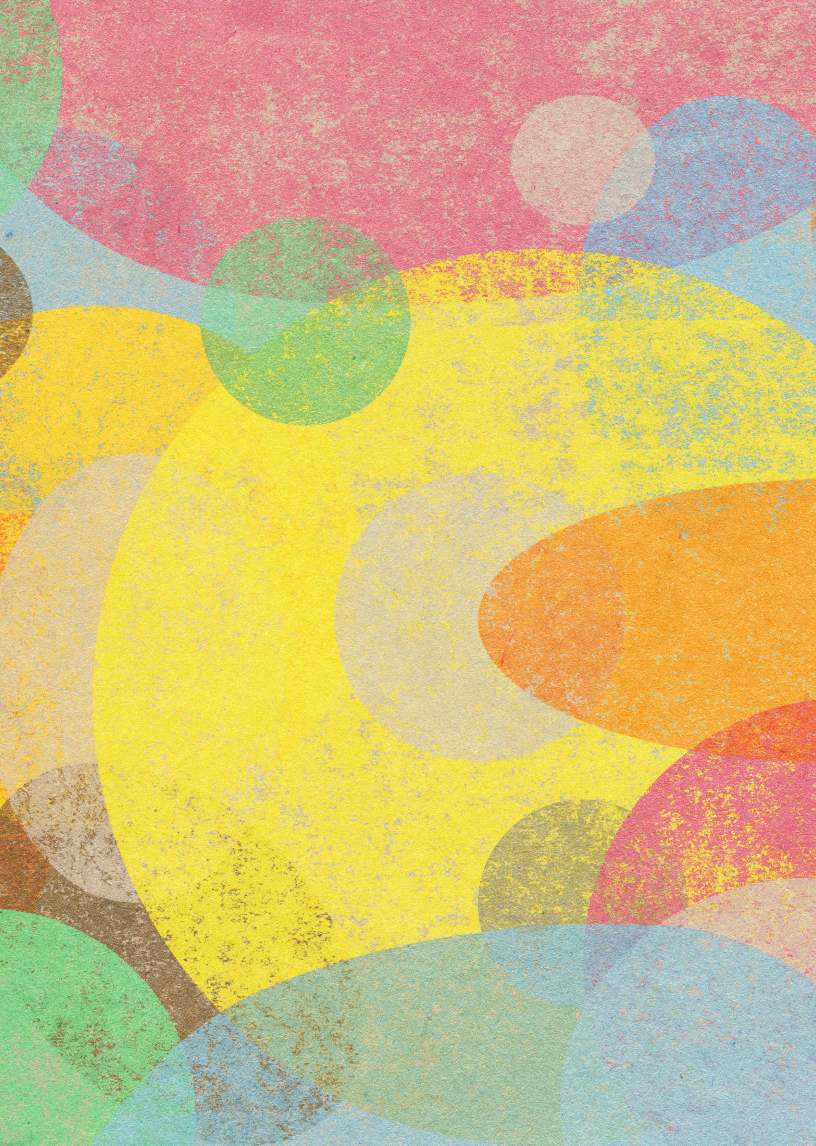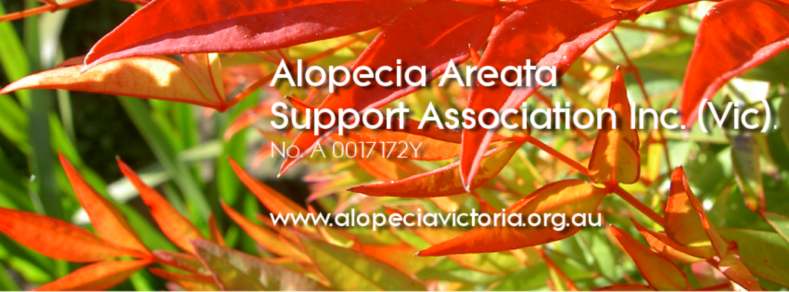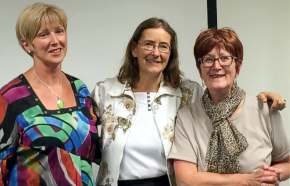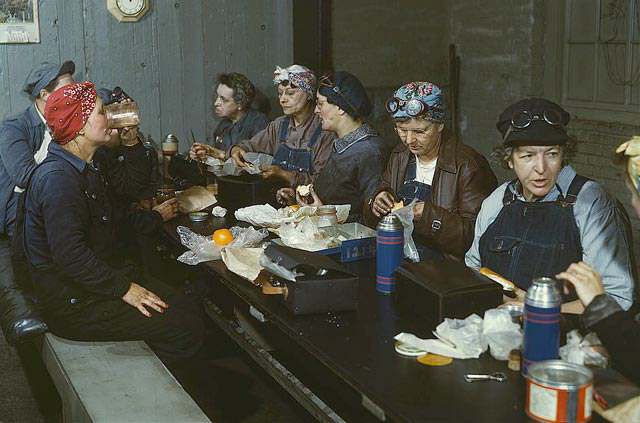Thealopeciologist.1.2014



Autumn 2014
Patient and Family Centred Care
‘the alopeciologist' May 2014 (c) Alopecia Areata Support Association 2014 www.alopeciavictoria.org.au

Mastering the art of living with alopecia = ALOPECIOLOGY
Make your own word pictures for free. Go to taxedo.com or wordle.com
This May 2014 edition of the AASA news- ety of challenges. In our ‘What can I do?' sec- Terri gave an honest and thoughtful
letter, has two themes. One is the concept
tion on page 8 where we've got some relevant
presentation from an alopecia patient's perspec-
of ‘patient and family centred care' and
helpful resources.
tive and her comments have already resulted in a
the other is an extension of our previous discus-
number of changes in the way the Skin and Can-
sion of the important but rarely discussed com-
On March 13th AASA members Terri
cer Foundation clinics work, such as improving
plexities around wearing wigs. We have also
Beardwood and Pat Crotty participated in a staff
the information that patients receive before their
included a new and interesting initiative from the
development session at the Skin and Cancer
first appointment. A summary of the session is
UK called ‘Option Grids'.
Foundation. The session was led by Dr Catherine
on page 6.
Crock of the Royal Children's Hospital. Dr
In the August newsletter last year we
Crock is the Executive Director,
And finally we have some background
featured the research being conducted in Scot-
to the notion of ‘alopeciology' and
land by Karena Moore-Millar and her col-
nd is probably best known as th
‘alopeciologist' (below) and a little more about
leagues. Karena's focus has been on the
‘Rosie the Riveter' of the iconic image on the
experience of being a wig-wearer and now some
Dr Crock spoke about the worldwide move-
cover (page 7). Her slogan
of that research has been published. Read the
ment towards engaging patients and their
summary on page 5.
families along with health professionals in im-
"WE CAN DO IT!"
proving the medical care which patients receive
One of our committee members,
and the resulting satisfaction levels for health
is, amongst other things, an encouragement to
Monique Cormier writes of her own experience.
care professionals. Dr Crock and her colleagues
people with alopecia to work with health profes-
She has become skilled at responding to different
have been able to apply this at the Royal Child-
sionals to make services more patient and family
situations and people when talking about her
rens' with some quite inspiring consequences.
wig. She writes about how she negotiates a vari-
What is alopeciology and what is an alopeciologist?
The first use of the term ‘alopeciologist' we can identify, comes from a 2012 course for doctors in Canada
conducted by Dr Jeff Donovan, a dermatologist. The course was called, "Basic Skills for the Developing Alopeciologist".
Alopecia Areata Support Association Inc
Vic
What a great word! But who better to be experts in alopecia, than the people who live the experience every day. That's
No. A 0017172 Y
Wikipedia tells us that ‘ology'is a ‘combining word ending', that is used to name a science or a body of
knowledge, such as theology or sociology. What better word to convey what we become experts in (and can teach others
about), than alopeciology. Terri Beardwood's presentation to health professionals at the Skin and Cancer Foundation is
surely a great example of the practice of alopeciology!
Tel: (03) 9513 8580 (Alopecia Helpline)
[email protected]
"Alopeciology" then, can be seen as a positive statement about the mastery of an area of knowledge (living
with alopecia) along with of a set of related skills. Some of those skills are on fine display in this issue, in MoniqueCormier's article and in Karena Moore-Millar's work. So, welcome to ‘the alopeciologist'! It's all about ‘alopeciology' -mastering the art of living with alopecia! We can do it!
‘the alopeciologist' May 2014 (c) Alopecia Areata Support Association 2014 www.alopeciavictoria.org.au

to tell, or not to tell.
everyone would be able to tell that
surprised, but they don't act
it was a wig anyway and I thought
shocked. They seem genuinely in-
it might be good to do a bit of
terested and ask intelligent ques-
awareness raising about alopecia.
tions about both alopecia and the
In addition, I thought that if I was
wig, and are complimentary about
planning to change my hair style
how the wig looks. These encoun-
fairly often, that an upfront expla-
ters leave me feeling self-confident
nation would prevent odd stares
and secure in my relationship with
and awkward questions. So began
others. Luckily, I would say that
what I now think of as my social
about half the people I have told
experiment with telling people that
about my wig react in this way.
Monique Cormier re-
I have alopecia.
searches and teaches at
Melbourne Law School
My ‘script' for telling people goes
In between the ideal and the awk-
where she is undertakingher PhD in internatio
something like this: I usually wait
ward are what I consider to be the
criminal law. Monique
until someone comments on my
‘annoying' responses. Ironically,these are most often conveyed by
has had alopecia for 15
hair and then I say "actually, I wear
close friends and family who don't
wigs. I have an auto-immune con-
always feel the need to filter their
dition called alopecia which causes
commentary. They can range from
To tell, or not to tell…
my hair to fall out". I then explain
being critical of my wig: "Hmmm,
that it's not painful or life threaten-
I think I like your other wig much
I began wearing wigs about three ing, and then reassure the person better" to insensitive comments
years ago. I had just turned 30
I've told that I'm used to it, and
such as "you're so lucky to be ableto wear wigs – I can't do anything
and for me, the decline from a few
that they haven't inadvertently
with my hair". Possibly the most
patches to what has now become
made me reveal a shocking secret. I
annoying (but well-meaning) are
alopecia universalis was a twelve
try to be quite matter of fact about
from people who want to help:
year process, so I was able to psy-
it. The reactions to this revelation
"what causes alopecia? There must
chologically prepare myself for the
be a reason for it. Are you stressed?
prospect of becoming a wig wearer.
Have you tried rogaine/shampoo
I thought of it as an opportunity to
The ideal…
without sodium laurelsulphate/scalp massage/positive
try out new hair styles and colours
Let me begin with the ideal reac-
and decided that I would tell people
tion to the announcement that I am
that I was wearing a wig. I chose
wearing a wig. This occurs when
medicine/vitamins/this cure that I
this course of action because I was
the person I have told reacts with
read about on the internet/ head
convinced in those early days that
empathy, but not pity. They may be
stands to let the blood circulate to
Alopecia Areata Support Association Inc Vic
In 2013 the British Medical Journal said, ".partnering with patients must be
seen as far more than the latest route to healthcare efficiency. It's about afundamental shift in the power structure in healthcare and a renewed focus on the
core mission of health systems. We need to accept that expertise in health and
illness lies outside as much as inside medical circles and that working alongside
patients, their families, local communities, civil society organisations, and experts
Tel: (03) 9513 8580
in other sectors is essential to improving health".
British Medical Journal 2013;346:f2614
‘the alopeciologist' May 2014 (c) Alopecia Areata Support Association 2014 www.alopeciavictoria.org.au
"My favourite reaction to a wig change:
One day I went from short blonde, to long and red.
A male colleague squinted at me and said "something's
different… did you get a haircut?"
your head/medication that works
than for her to think that I spend an
now far more discerning about who
for other auto-immune condi-
hour every morning styling it. After
I tell, and usually only change my
tions…?" You name it, we've all
the meeting, I caught up with the
hair style around people who know
girl and told her it was a wig, that I
I wear wigs, or every six months at
had alopecia. She seemed okay
work. Of course I would still pre-
with my explanation, but that was
fer to be open and tell people about
And then of course, are the the last time I ever spoke to her. my alopecia, but I do find myself
awkward reactions. Unfor- She completely avoided me after
being a little more evasive in cer-
tunately I've had far more
that. I don't know whether she was
tain situations.
of these than I anticipated when I
embarrassed, or thought it was an
started telling people that I wear a
odd thing for me to tell her, or was
wig. For example, when I first told
perhaps freaked out by my revela-
I try to think about it from their
perspective, and I wonder how
an older woman that I work closely
I would have reacted before my
with, she just looked shocked and
own experience with alopecia if
kept asking me if I was okay. It's
In another notable encounter, I
ran into an acquaintance – a
someone told me they were wear-
been three years now, and she still
young, brash, confident male. I
ing a wig. There are so many things
doesn't like it when I mention the
was wearing a completely different
that those of us with alopecia have
word ‘wig'.
hair style from the one he was used
to adjust to and become adept at
to seeing, and he went on and on
dealing with, and telling people
For a while I was wearing a about how he really liked my previ- about our condition and wigs is a
curly wig and a girl my age
ous hair, and kept asking why I
skill that requires judgment and
commented on my hair and
changed it. I didn't feel comfort-
strategy. And much like the condi-
asked whether it was natural. At
able explaining to him at that mo-
tion itself, the responses remain
that point we were in a seminar
ment about it being a wig because
with about six others, and so rather
he was with someone I didn't
than announcing that I wear a wig
know. Instead, later on, I wrote him
in front of people that I didn't
an email to explain. I didn't hear
know very well, I just said "no, it's
anything back for a week, but then
not natural" because let's face it, a
received a sweet, very sheepish re-
synthetic wig is as unnatural as it
sponse, in which he apologised pro-
gets! This girl then went on to say
fusely for his behaviour.
how she could never be botheredstyling her hair every morning andhow I must spend so much time on
No doubt such stories are
common for those who
it. I would far prefer that she know
have experimented with
that I wear a wig and that my hair
telling people about their wigs.
takes literally two seconds to put on Given my varied experiences, I am
Alopecia Areata Support Association Inc Vic
"It has been said that healthcare won't get better until patients
play a leading role in fixing it.
We agree and look forward to helping drive the patient
revolution on".
Tel: (03) 9513 8580
British Medical Journal 2013;346:f2614
‘the alopeciologist' May 2014 (c) Alopecia Areata Support Association 2014 www.alopeciavictoria.org.au

‘Concealing hair loss is thus not an end point;
it is the starting point for individuals in a life without hair'.
This is one of the cover images from
our Facebook page.
Note our new web address.
In our August newsletter last ing a wig. In other words, wigs may
Probably most women
Should wigs be treated like
year, Karena Moore-Millar gave
‘fix' one problem, but create others.
with hair loss, when it is beyond
other prostheses in the context
of ‘rehabilitation'?
us some great text and images
being disguised by rearranging a
explaining her research into the
Karena and her colleagues
hairstyle, will choose to wear a wig
In a small study of women with
‘wig-wearing'experience. The inter-
point out that the wig-wearing alop-
and the researchers suggest that it's
AA in Japan, wigs have beenshown to improve the quality of
national journal ‘Body Image' has
cia life is a type of ‘impression
not enough to tell someone to get a
life of women with alopecia.
now published some of the research
management' that everybody does
wig and get on with their life. Pro-
(Shigeki et al 2012) .
that Karena did for her PhD. It is an
to some extent. We dress up differ-
viding good information about what
important and interesting article
ently for some occasions, we may
women can do next and who can
This study was conducted in thecontext of ‘rehabilitation'. This
with a delicious double meaning in
be in some roles where we need to
support them in their complex read-
perspective helps us ask, what
the title - "Can you pull it off? Ap-
be authoritative and in others where
justments and management of social
similarities and differences are
pearance modifying behaviors
being authoritative would make a
interactions should be a basic part
there between for example, am-putees as they adjust to life with
adopted by wig users with alopecia
very bad impression. The authors
of good care.
an articial limb.
in social interactions".
believe that the information fromthe study demonstrates wig-wearing
When better understood,
What would a hair loss rehabili-
A central issue of interest
creates ‘a huge interactional and
the complexities of the alopecia life,
tation program be like?
for the research group was the pos-
personal burden' and that ‘Conceal-
can be the basis of better quality
sibility that the current medical rec-
ing hair loss is thus not an end
care, support and headwear prod-
Alopecia Areata Support Associa-
ommendations to use wigs as an
point; it is the starting point for in-
ucts for people affected.
tion Inc VicPO Box 89
‘aesthetic coping mechanism', un-
dividuals in a life without hair'.
Well done Karena!
derestimates the ‘work' involved in
This is particularly so around the
wearing a wig in terms of managing
person's preferences about who
different interactions with various
should know about the wig and who
Tel: (123) 456 7890Mobile: (123) 456 7891
people, and the possibility that there
is an appropriate person to be able
Fax: (123) 456 7892
may need to be some preparation
to make comments about it and how
for the person in transition to wear-
to manage those preferences.
What are the biggest challenges in the daily lives of women with Alopecia Areata?
Thea Chassin is the founder of Bald Girls Do Lunch, the U.S. support As the bulk of women will choose a head covering of some type and most of
organisation for women with alopecia. She has recently asked women
those will decide they want a wig to be at least part of their appearance man-
in her network, what they considered were the biggest challenges in
agement, what are the skills that we can learn?
their daily lives. In a post in their newsletter Thea has categorised the re-sponses into 4 main categories.
Monique Cormier's article shows some of the ordinary everyday interactionswhich are affected and become part of life with alopecia such as interactions
Women with alopecia struggle with positivity and confidence, they worry
with colleagues in the workplace and she demonstrates skills that can help
about what people think, they consider hair very relevent to their sexuality,
someone feel more in control of their alopecia, than vice versa.
and lastly ‘Wig Worry'. This last category fits very well with Karena Moore-Millar's work, Thea also notes that whilst wigs replace what has been lost
You can read the complete post by Thea Chassin at:
and wigs do give women more confidence in their appearance, it also adds
new stresses.
alopecia or just search for Bald Girls Do Lunch.
‘the alopeciologist' May 2014 (c) Alopecia Areata Support Association 2014 www.alopeciavictoria.org.au

".patient and family centred care is about changingthe culture and about partnering to improve health-care experiences for everyone involved".
Terri Beardwood, Dr Cath Crock, Pat Crotty
Photo: Courtesy Skin&Cancer Foundation
Skin and Cancer Foundation
Partnership and collabo
Dr Crock's stories showed
how important patient and family
To sum this up for me PFCC is
voices are in modifying services so
Dr Crock is alsowell known in her
about relationships.
that patients, health professionals
n Thursday evening March
I am going to describe to you an
and staff are more satisfied with the
role as the creator of
13th, Terri Beardwood and
unexpected journey for me over the
care that is provided.
I attended this session to
past 15 years. Its really a story
present a patient's perspective on
producer the music
about listening and valuing every-
Terri told how the imper-
alopecia. The evening was intro-
one's input - patients, families and
sonal nature of her consultation
played in many hos-
duced by Chris Arnold, the Execu-
frontline staff. Its about changing
combined with the pain she experi-
pitals and health
tive Director of the Skin and
the culture and about partnering to
enced meant she was really unfit to
care settings (and
Cancer Foundation. The Founda-
improve healthcare experiences for
drive home, but no one had told her
tion through Jane English, is plan-
that she would need to bring some-
ning a series of 3 sessions this year.
one with her to the appointment.
This as the first in the series and the
Much of Dr Crock's work
made for the 7.30
audience consisted of about 20 peo-
Report and purchase
is with childhood cancer and over
The discussion was most
ple, nursing and administration
the course of 3 years of treatment,
interesting with 2 dermatologists
CDs through iTunes
staff and dermatologists.
children undergo many invasive
talking about the pressures on them
or Readings.
and painful treatments.
in some workplaces which meant
This first session was
they had less time with their pa-
‘The Magic Island',
about "Patient and Family Centred
One very important point
tients. Terri was able to make a
the most recent CD
Care" and Dr Cath Crock from the
made by Dr Crock was that when
number of very positive sugges-
is a beautiful collec-
Royal Children's Hospital who is
she advocted some much needed
tions as to how improvements
tion of original mu-
the Executive Director of the
changes which would be less pain-
could be made to communication
sic by Australian
musicians and com-
ful for the children and less stress-
and record keeping, some of which
posers such as Paul
ful for their parents, one objection
have already been implemented.
speaker. She set out the values
frequently put to her was that ‘we
Westlake, and Elena
which underpin this international
have done it in the same way for 20
We can do it!
movement and why it is important.
years and no-one had ever com-
There is one thing we can all do, if
This is how she commenced the
we are given a patient feedback
Tasmanian Sympho-
form FILL IT IN we can be honest
ny Orchestra.
To quote Dr Crock,
about both the positive and nega-
"Patient centred care what is it?
"I want to reinforce that there was
tive aspects of our care! If a service
There are definitions around which
an extraordinary mismatch be-
doesn't have patient feedback
can give an idea of the basic prin-
tween no one ever complaining and
forms, write a letter. Like Terri's
how they were really feeling".
story, your story can make a differ-
Respect and dignity
ence too. We can certainly do that!
A survey of 100 sets of parents
confirmed the need for change.
".there was an extraordinary mismatch
We thank Jane English,Manager, Clinical Services
between no one ever complaining and
at the Skin&Cancer Foun-
how they were really feeling".
dation involving us in thissession.
Pat.
‘the alopeciologist' May 2014 (c) Alopecia Areata Support Association 2014 www.alopeciavictoria.org.au

"It doesn't matter just what hairstyle you use, as long as it looks right on you just be
sure your hair do suits you and is neatly in place.
These grooming habits form the basis of a good appearance"
Voice over from " 1940s Fashion - How to Dress and Makeup" on You Tube.
THE PATIENT'S PERSPECTIVE
The Option Grid a
continuing with treat-
and has recruited a team
cisions based on their
treatment in recognition
story from Alopecia
ments. The Options Grid
of professionals to de-
preferences and personal
of the potentially life
is an interesting example
velop a one page table of
values. It will set out the
changing impact of alo-
Many people
of how to help people
frequently asked ques-
options available, their
with alopecia face what
make those decisions.
tions (FAQs) which will
side effects and likeli-
Another example where
may be difficult deci-
help patients discuss
hood of success. It will
patient views can lead to
sions about either start-
mas works with Alo-
treatment options and
include psychological
better decisions.
ing or in the longer term,
pecia UK as a volunteer
make well-informed de-
support as a category of
We can do this too!
More information on page 8
Our cover
‘We Can Do It!'
Rosie the Riveter
Wikipedia tells Rosie the Riveter song
from 1942 on You Tube
and see some historic
a cultural icon of the
U.S. who became a
workers of the time
symbol of women's ca-
pabilities. She was acreation of the artist J.
And the legacy lives on
Howard Miller and rep-
through a Foundation in
resented the American
The Foundation runs
factory workers during
"Rosie's Girls" a nation-
the Second World War
al youth program for
when production needs
young women, designed
in areas like munitions
to build self-esteem,
and armaments were
leadership and physical
very high but the
confidence through an
number of workers had
exploration of trades
dwindled with so many
and non-traditional ac-
men in the armed forces. tivities. Their slogan is,These social circum-
stances were also appli-cable to Australia, New
"We can do it .today"
A group of real Rosies: Factory workers of the time sharing a lunch break
Zealand, Canada and theUK.
The poster was designed
Lastly but certainly not least, go to You Tube for your guide
to keep up morale in the
to 1940s femininity, hair, nails and clothes.
1940s Fashion - How to Dress and Makeup
You can get a nostalgia
fix by listening to the
‘the alopeciologist' May 2014 (c) Alopecia Areata Support Association 2014 www.alopeciavictoria.org.au
‘the alopeciologist' May 2014 (c) Alopecia Areata Support Association 2014 www.alopeciavictoria.org.au
From our Facebook page
Sources for this edition
Chassin, Thea In Your Words: The Biggest Chal-lenges Facing Women With Alopecia, Bald GirlsDo Lunch Newsletter
accessed April 16th, 2014
Option Grids (USA) and Decision Aids (UK)
OK, So we know we can do it -
Shigeki INUI,1 Takenobu INOUE,2 Satoshi ITAMI,
But how? What can I do?
Psychosocial impact of wigs or hairpieces on perceivedquality of life level in female patients with alopecia
There is an increasing amount of research recog-
areata (letter to the editor) The Journal of Dermatology
nising the challenges posed in coming to terms with hair-
loss - but unfortunately there is virtually no research whichwould help us identify the skills related to hair loss specifi-
The Hush Music Foundation
cally that we could use and the ways we might learn them.
How do people with alopecia learn the skills they
The Australian Institute for Patient and Family
develop? How did you learn the strategies you use to live
more positively with alopecia?
Wiggins, S. Karena Moore-Millar and Avril
What would you tell someone with recent hair loss
Thomson . "Can you pull it off? Appearance
that would help them in their journey? Can you share some
modifying behaviors adopted by wig users with
of your thoughts with us? Anonymously if you prefer.
alopecia in social interactions" Body Image(2014),
there are some great ideas in Monique's article. Have alook and see how many alopeciology skills you can identi-
1940s Hair Styles on You Tube
1940s Fashion - How to Dress and Make-
Send us an email [email protected]
Drop us a line ‘the alopeciologist',PO Box 89, Camberwell 3124
Victoria, Australia
1940's Fashion - Women's War Hairstyles
We hope you enjoyed the Autumn issue of
‘the alopeciologist'. We'd love to hear what
you thought of it, because we want to make itboth enjoyable and useful for you.
Source: http://www.alopeciavictoria.org.au/thealopeciologist.1.2014W.pdf
Here are some facts that are still unknown to the greater population on sodium fluoride: It's a hazardous waste by-product of the nuclear, fertilizer and aluminium industries. It was used by the Nazis to render prisoners more docile. It was used as an active toxin in rat poison and commercial insecticide (particularly for cockroaches). It is one of the primary ingredients found in Prozac, Sarin nerve gas, anaesthetic and in hypnotic, psychiatric and anti-depressant drugs, and to some extent in vaccinations.
European Journal of Neurology 2012, 19: 360–375 EFNS guidelines on the Clinical Management of AmyotrophicLateral Sclerosis (MALS) – revised report of an EFNS task force The EFNS Task Force on Diagnosis and Management of Amyotrophic Lateral Sclerosis: Peter M.Andersena, Sharon Abrahamsb, Gian D. Borasioc, Mamede de Carvalhod, Adriano Chioe, PhilipVan Dammef, Orla Hardimang, Katja Kolleweh, Karen E. Morrisoni, Susanne Petrih,Pierre-Francois Pradatj, Vincenzo Silanik, Barbara Tomikl, Maria Wasnerm and Markus WebernaUmea˚ University, Umea˚, Sweden; bUniversity of Edinburgh, Edinburgh, UK; cCentre Hospitalier Universitaire Vaudois, University of











